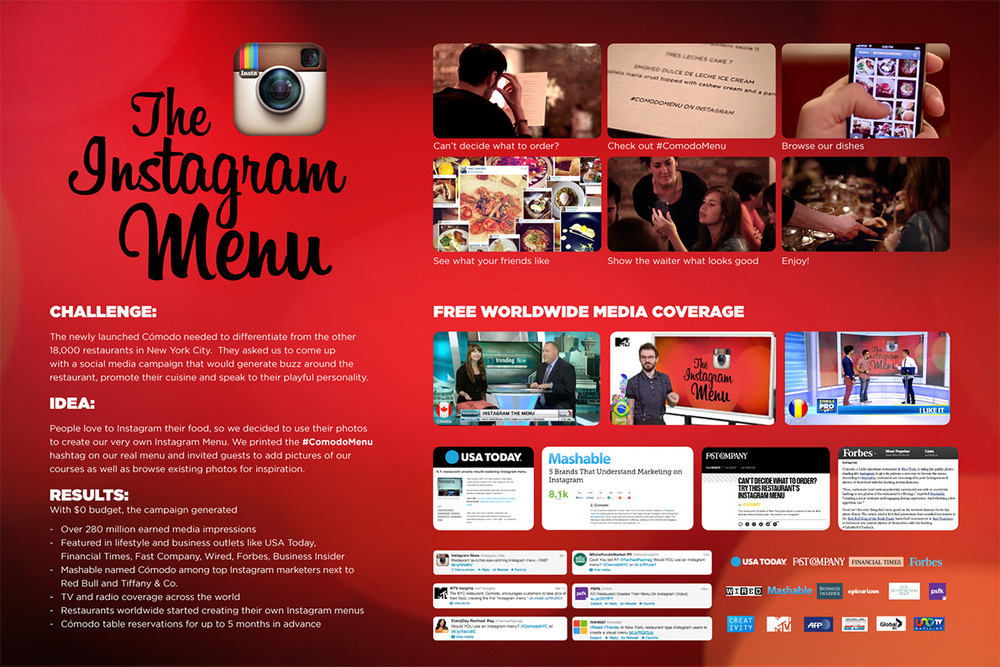[youtube=http://youtu.be/TKNA5GnO7Xs]
[Comodo NYC’s Instagram Menu]
In late 2012, a new restaurant was opened in Soho, NYC, the US and they came up with a trendy digital marketing strategy, which effectively used the characteristics of hashtags and SNS users who like sharing their experiences. The restaurant introduced a hashtag on the menu – called #ComodoMenu – which Instagram users, especially those known as ‘foodies’, could use for their ‘foodstagramming’. Everyone who typed the hashtag could see the tagged photos and share theirs with other users.

[http://instagram-menu-comodo.com/]
As a start-up business, marketing could have been one of the trickiest things to do efficiently and effectively, but Comodo NYC amazingly fulfilled the two challenging issues on marketing, with almost the zero cost. This was a good example of viral marketing. The restaurant simply opened a platform for customers to play in, and visitors were happy to join this easy and fun digital playground.
Thanks to helps from #foodies on Instagram like this case, restaurants do not need to feel pressure to include visual descriptions on every dish they offer, which could have sometimes made the menu look messy let alone costly. Customers also benefit from this marketing, by being able to look at the actual photos of the meals and thoughts or feeling as for the dishes from previous visitors, before they decide to order anything or even visit the place.
However, there are two possible variables in this marketing: consistency and filters to prevent irrelevant information, malicious approaches from competitors, and overlapping strategies. As of 9th November 2014, the hashtag ‘#comodomenu’ on Instagram was used in 2,045 posts. Considering the fact that the buzz started two years ago, it might have not lasted strongly since then. This specific example is not a type of marketing that works the best when it rises quickly and disappears after a short period of time as soon as it draws big attentions. It is perfectly fine or even better when it becomes steady, and this is where the difficult issue comes up in marketing. Compared to other marketing methods, this case was relatively instant and easy to execute. Turning a fad into a long-term trend, however, is tricky unless operators continuously encourage customers.
Linking to the first point, the thing that there is no specific filter on Instagram platforms can cause problems as well. Anyone who just adds #comodomenu in their posts can join the platform on Instagram. Based on how viral the marketing was according to the creative agency, it is easier than anything else for users (and this includes competitors too!) to use the hashtag to pull other Instagram users to their accounts and photos/videos hoping to have more ‘hearts’, even if the posts are not actually Comodo NYC’s menu. This allows competitors to mess up Comodo NYC’s menu too. Another potential resulting from no filtration is that multiple businesses can use the same hashtag. Apparently at the moment this same hashtag seems to be used in restaurants in Madrid, Spain, which means not all the 2,045 posts so far are about the restaurant in Soho in the US. Combined with the these variables, the original marketing will no longer attract visitors and they will not be bothered.
Creating marketing buzz using social media is certainly a big opportunity in businesses, especially for SMEs in that even those who do not have enormous budgets can relatively easily perform social media marketing. Still, it raises some considerations for businesses to think about, before and after any marketing idea is practised.
